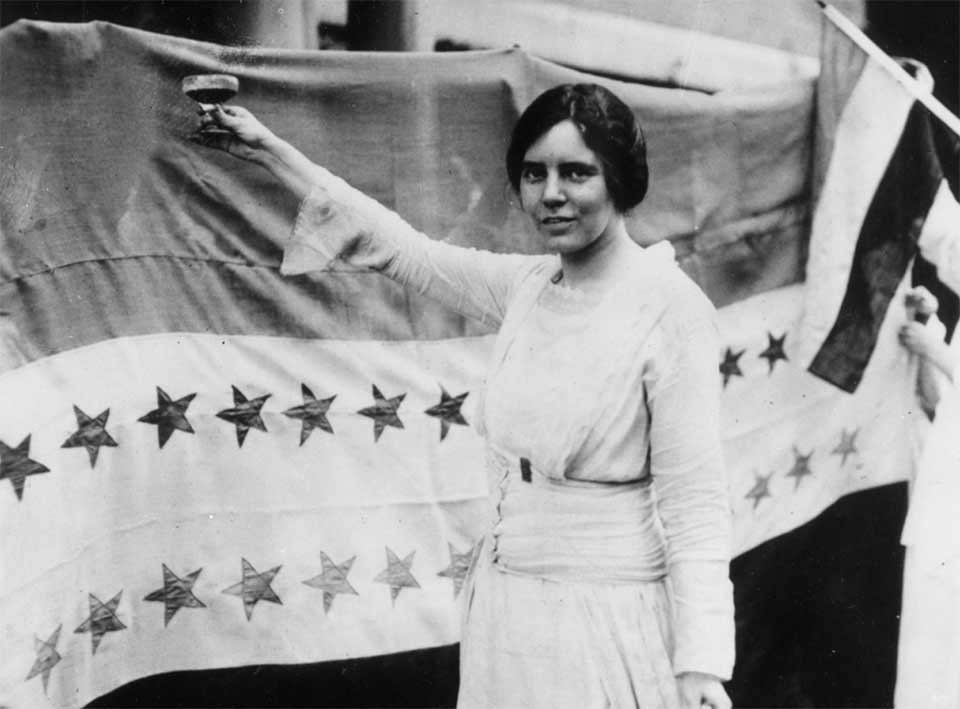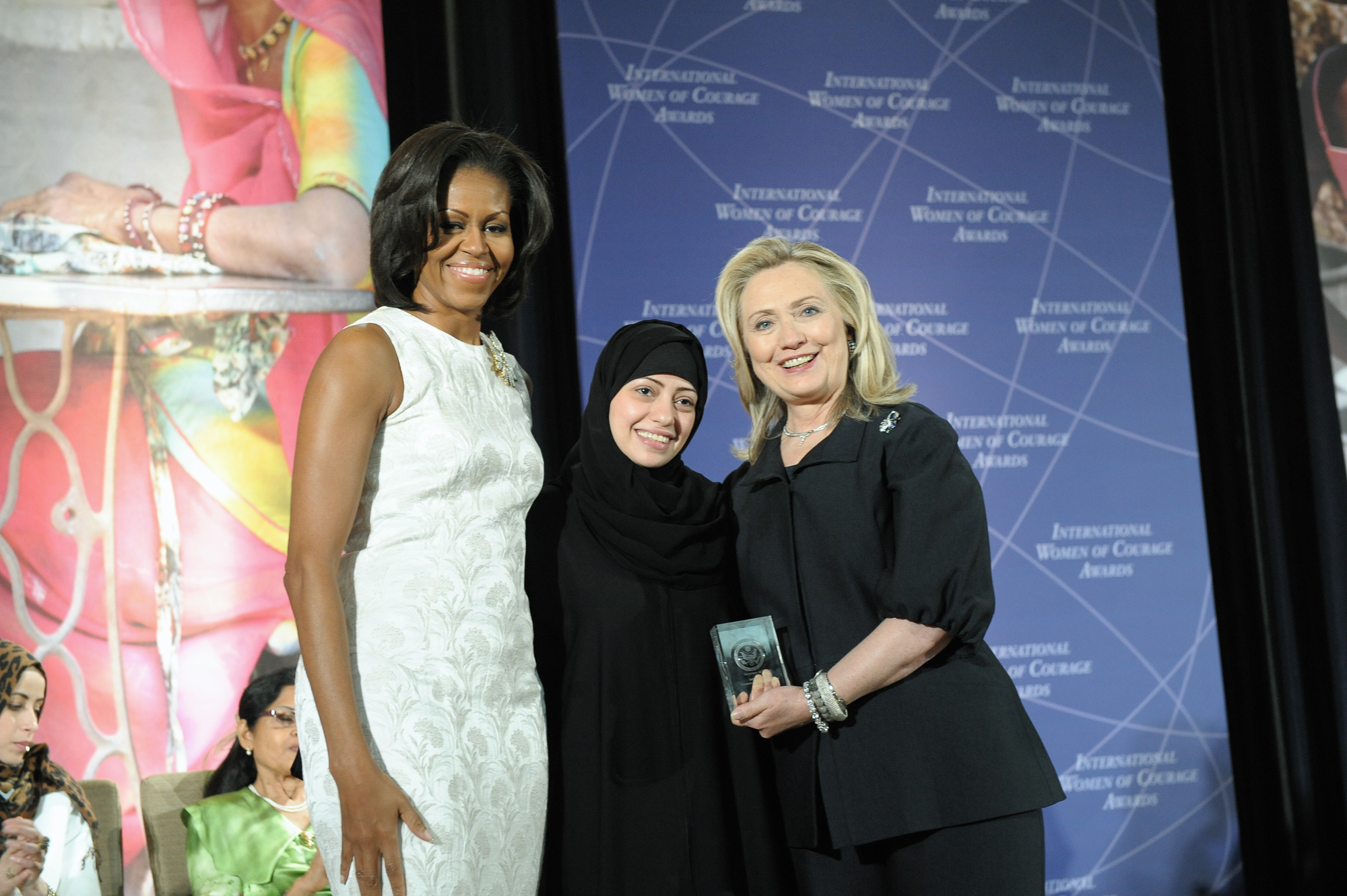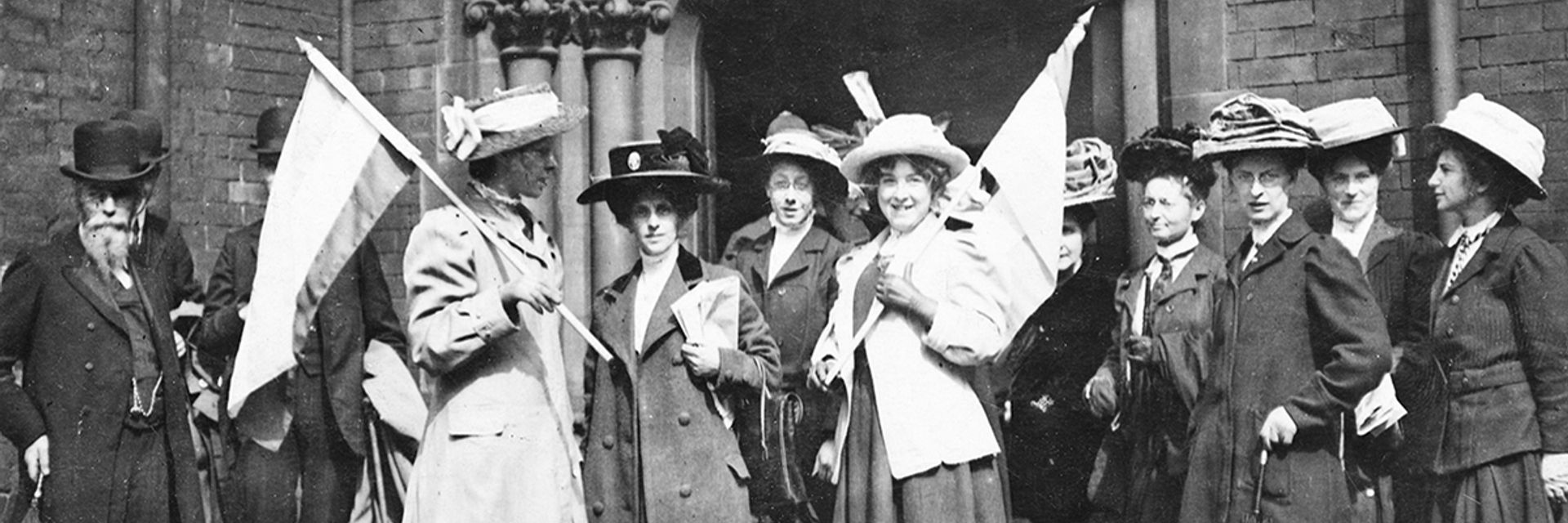Throughout modern history, women around the world have had to fight for their right to vote – a struggle that resulted in decades-long women’s suffrage movements. Universally, the women’s suffrage movement amplified the female voice and paved the way for future rights movements. Countless women from around the world have dedicated their time, and sometimes their lives, to the cause. Among these women are suffragist icons Emmeline Pankhurst, Alice Paul, and Samar Badawi.
◊
I recently cast my vote in an election that would determine the next president of the United States – and I had a lot of company. The number of voters this year was record-breaking. But as I voted, it occurred to me: so many people take this opportunity for granted. Yes, today I can vote, but it really hasn’t been all that long since I would have been turned away at the polling site. Why? Simply because I’m a woman.
Until the 20th century, most women in democratic countries worldwide weren’t permitted to vote. For example, when it was adopted back in 1787, the U.S. Constitution granted individual states the authority to set voting requirements – and most of them limited those rights to property-owning or tax-paying white males. For well over a century, voting restrictions on men were gradually loosened, but women were still barred.
This year marks the 100th anniversary of the ratification of the 19th Amendment to the U.S. Constitution, which guarantees women the right to vote. But getting there took a fight. And it wasn’t just American women who were willing to throw some punches.
Over on the other side of the Atlantic Ocean, Ireland’s Easter Proclamation of 1916 guaranteed religious and civil liberty, equal rights, and equal opportunities to both men and women. But voting rights? Well, yes . . . and no. Onerous restrictions were imposed on would-be women voters, requirements well beyond those for men. Not surprisingly, the Irish women’s movement grew fiercer – right along with the continuing struggle for Irish independence. With the establishment of the Irish Free State, in 1922, women finally gained equal voting rights.
The success of movements always depends on leaders, and the fight for women’s rights generally – and suffrage in particular – has been blessed with many such leaders. Here are three women who have helped shape the cause of women’s rights from the 19th century to the present day.
Emmeline Pankhurst, Britain
Emmeline Pankhurst (center) at suffragette meeting in Caxton Hall, Manchester, England (1908). (Credit: Public domain, via Wikimedia Commons)
Emmeline Pankhurst was destined to be a pillar in the women’s suffrage movement. Activism ran deep in her blood, which comes as no surprise when you consider her political pedigree. Both of her parents were abolitionists and feminists, her grandmother worked with the Anti-Corn Law League, and her grandfather was present at the Peterloo Massacre which took place during a protest for parliamentary reform. Being the feminists her parents were, it’s no surprise that Emmeline was introduced to women’s suffrage at a young age – a movement her mother kept up with through a subscription to the Women’s Suffrage Journal. Emmeline became involved in her parents’ crusades and began attending women’s suffrage meetings with her mother at the age of 14.
Pankhurst was known for her more radical approach to women’s suffrage, and she was regularly arrested and imprisoned. But that didn’t stop her. She continued to be an influential figure for the cause, and brought her own daughters – Christabel, Sylvia, and Adela – into the movement. They followed in their mother’s footsteps and became influential figures in their own right.
The Daily Mail coined the term “suffragette” in Pankhurst’s honor. Prior to Pankhurst’s more militant approach, the term “suffragist” was used to label supporters of the movement. This new term was meant to label those who advocated Emmeline’s new, more confrontational approach.
Christabel, being the most like her mother, worked closely with Emmeline. The two even co-founded the Women’s Social and Political Union (WSPU), whose slogan was “Deeds Not Words,” in 1903. The WSPU was known for its use of physical confrontations, and Christabel was crowned “The Queen of the Mob” – a title I’m sure made Emmeline proud – and went on to direct WSPU activities, like editing the movement’s newspaper, The Suffragette.
Emmeline’s two other daughters, Sylvia and Adela, didn’t have the same connection with their mother that their older sister had, and their disagreements caused tension in the family. Their differences became so sharp that Sylvia and Adela were both expelled from the WSPU. Sylvia became active in communist and anti-fascist movements, and Adela co-founded both the Communist Party of Australia and the Australia First movement.
Emmeline Pankhurst was a force to be reckoned with, and it’s clear that she didn’t spare her family from that side of her. She would live to see Parliament grant limited suffrage to women in 1918, but would pass shortly before full voting rights were granted in 1928. It’s hard to imagine that achievement without noting Emmeline’s efforts, regardless of how controversial they were.
Alice Paul, United States

 Suffragette Alice Paul raises a glass in front of a ratification banner in 1920 (Source: National Women’s Party Collection/Library of Congress)
Suffragette Alice Paul raises a glass in front of a ratification banner in 1920 (Source: National Women’s Party Collection/Library of Congress)
Quiet is not a word you will find associated with suffragette icon, Alice Paul.
During graduate school, Paul spent time abroad. In London, she connected with Emmeline Pankhurst and joined the Women’s Social and Political Union. It was there that she picked up new tactics to draw attention to her cause – tactics she would put to use with the National American Woman Suffrage Association (NAWSA) upon returning to the United States.
Like Pankhurst, Paul’s in-your-face approach wasn’t accepted by all her comrades in the movement. And the protests she organized, like coordinating the “Women’s Picket” to surround the White House on the day of President Woodrow Wilson’s second inauguration in 1917, drove a wedge between her and more conservative women in the group. Paul didn’t let her quieter peers silence her, though, and she left NAWSA to establish her own organization: the National Women’s Party.
In fact, there wasn’t much that could silence Alice Paul. Even in the face of World War I, she kept eyes focused on her cause by staging a seven-month-long picket in front of the White House – a stunt that would land her, along with the rest of the NWP suffragists, in jail.
While imprisoned, Paul was placed in solitary confinement. But, you guessed it, she still didn’t let them silence her. In protest, Paul and her fellow prisoners went on a hunger strike. The prison staff responded by force-feeding the women for three weeks before word got out and the women were released.
All the effort Alice and the other suffragettes put into the cause was worth it, but it took awhile. In 1878, the 19th Amendment to the Constitution, which grants women the right to vote, was introduced in Congress. Not until 1919, though, was the amendment finally passed by the House of Representatives and the Senate, and sent to the states for ratification. Finally, on August 18, 1920, Tennessee became the necessary 36th state to approve.
Not all 48 states (at the time) needed to vote for the passing of the 19th Amendment. In fact, some states didn’t jump on board until decades later. Mississippi, for instance, couldn’t manage to get around to voting formally for ratification until 1984!
Even with the victory, Alice Paul wasn’t done. She continued her work, proposing an Equal Rights Amendment (ERA) to the Constitution. But getting it done has been a long process. In fact, it’s a fight that continues. Even though the ERA was approved by Congress, it stalled in the ratification process and has not yet been added to the Constitution. Go figure.
Samar Badawi, Saudi Arabia

Samar Badawi receives the 2012 International Women of Courage (IWOC) Award from Michelle Obama (l.) and Hilary Clinton (r.) (Source: U.S. Department of State, Public Domain, via Wikimedia Commons)
In 2015, for the first time in its history, the Kingdom of Saudi Arabia permitted women to vote and run for office in municipal elections. This historic step was the result, in no small part, of pressure brought by courageous women like Samar Badawi.
Samar received international attention when she became the first person to file a lawsuit in support of women’s suffrage in Saudi Arabia – an action that cemented her position as a women’s rights activist. She filed the suit against the Ministry of Municipal and Rural Affairs when she was refused voter registration in the 2011 municipal elections. While her case was eventually ruled “premature” by a Saudi court, it did stir up attention. In fact, later that year King Abdullah signed off on women’s suffrage, announcing that women would be allowed to vote and run as candidates in municipal elections in 2015.
The 2011 lawsuit wasn’t the first time Badawi took a legal stance against the injustices she saw in her country. Back in 2010, she first received attention for her cause by suing her own father. Historically, Saudi judges have ruled in favor of fathers who sought to imprison their adult daughters for “disobedience.” But when Samar’s father refused her the right to marry, she took him to court, filing for an adhl (prevention of marriage by guardians) case (and she won!).
In 2012, Samar Badawi received the U.S. Department of State’s International Women of Courage Award, recognizing her role in the women’s suffrage movement. She was honored as a pioneering figure for filing the adhl and voting rights lawsuits.
Samar Badawi has been a leader for many different women’s rights issues. In addition to fighting for suffrage, she was involved in the 2011 and 2012 movement to allow women to drive cars in Saudi Arabia, joining with other courageous women to learn the basics, get in a car, and hit the road. In 2012, Samar also took legal action against the Ministry of Interior when her driver’s license was rejected. Thanks in part to these efforts, women were granted the right to drive in 2018.
Appallingly, Samar was arrested on July 30, 2018, in a crackdown on women’s rights activists. She remains in jail today, along with several other women’s rights activists.
Women’s Suffrage in Today’s World
The progress we’ve made has been great, but we still have a way to go before women’s suffrage is truly universal. It may be hard to believe, but there are places where women still do not have a voice – or a vote. And even where women have the legal right to vote, sometimes it’s not safe or readily accessible.
Some women are still restricted by outrageous rules and long-standing cultural traditions. For example, in some countries women must prove their level of education in order to cast a ballot, or even receive permission from the men in their families. Heck, in some cases, a woman’s clothing can be used to determine her right to vote. I wish I were joking, but I’m not.
In Egypt, for example, women are allowed to vote. But I use the verb “allowed” loosely, because they are banned from voting if their outfits are deemed either “too revealing” or not revealing enough. In order for these women to vote, you see, they must remove their niqab (or veil) to confirm their identities at the polls. But this puts them in a tricky (and often uncomfortable) position, as they are generally expected to wear the niqab at all times when in public. See what I mean? They’re stuck in a catch-22. Who can blame them if they walk away from the polls because they feel conflicted and unable to comply?
One place where women can’t vote? Vatican City. This holy city state allows only cardinals to cast votes in the election of the Pope – and only men are appointed by the Pope to be cardinals.
Let’s face it: There’s still a long way to go before women and men achieve true equality. Women around the world still struggle to receive the same opportunities, salaries, and recognition as men. But, thanks to women like Emmeline Pankhurst, Alice Paul, and Samar Badawi – and all the others who have marched, spoken, and even gone to jail for the cause of women’s suffrage – at least we can do something about it now. We can vote.
Ω
Title Image: Women celebrating their newly granted right to vote in Vancouver, Canada, April 5, 1917 (Public Domain)

